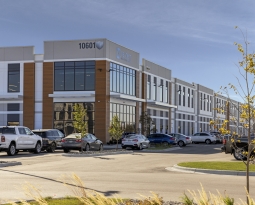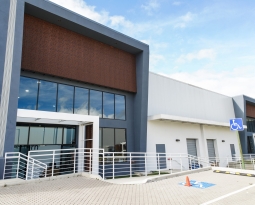How Engineering and Operations Work Hand-in-Hand to Tackle Supply Chain Challenges
In Supply Chain
How Engineering and Operations Work Hand-in-Hand to Tackle Supply Chain Challenges2022-07-052024-09-23https://nextern.com/wp-content/uploads/2018/09/nextern-mainlogo-250px-2x.pngNexternhttps://nextern.com/wp-content/uploads/2022/07/nextern-7.18.22-how-engineering-and-operations-work-banner.jpg200px200px
In 2021, supply chain issues were prevalent across the globe, affecting lead times on all kinds of products, most notably, microchips. Consumers have experienced the infamous chip shortage when trying to purchase cars, computers and more. Nextern’s partners rely on these chips to manufacture and operate medical devices, which raised concerns about medical supplies early on.
To learn about medical supply chain issues last year, Nextern’s team heard from Ryan Feltz, Nextern’s Strategic Purchasing and Inventory Manager about the supply shortage of chips. Manufacturing microchips is a complex, time-consuming process, and when labor and materials are limited, this process can take even longer. In 2020, microchips were in low supply, and as many people worked from home and shifted their spending habits, the demand for microchips began to rise, creating the ongoing chip shortage.
Preventative Measures Helped Delay Shortages
Initially, Nextern was able to leverage our global supply chain in China and Vietnam to secure secondary supply. This extra “pool” of supplies helped sustain our operations with low risk in the volatile market we were in. We were able to vet potential suppliers and reduce risk during the crisis. Nextern’s partners benefited from our local suppliers and slowed the time it took before we had to worry about taking next steps. Now, a year after we first spoke with Ryan, he gave a similar report. Shortages across the globe are not improving, and demand continues to be high among consumers. Nextern’s secondary supply of necessary materials and chips are running thin, which are causing us to turn to alternative solutions to fulfill our partners’ and their patients’ needs.Alternative Supplies Replace Chip Demand
Our first approach to maintaining operation as normal is to find supply and chip alternatives that do not require a design change. By making minimal changes and performing EMC and safety testing, we can more easily bypass the wait time for supplies and manufacture products sooner rather than later. Sometimes this includes changing the board, which may lead to regulatory testing, but that is still often preferable to waiting more than a year for a single part.Redesigns Help Mitigate Supply Issues
If alternative parts cannot do the job of a missing component, we then look at redesigning the product. At Nextern, we are creating a procedure for redesign to streamline the process. Redesigns can be expensive and time-consuming given that redesigns often require software updates, but in the era of 52-week wait times (and getting longer), this is a viable option for many. By reviewing ongoing risks in the supply chain, we can target areas for redesign. When approaching a redesign process, we try multiple iterations that target different parts, price points, scenarios and risks. In doing so, we can determine the most effective, affordable and viable alternative. Another innovative method Nextern is using is taking a modular approach to redesign. To design and test software for a board or series of boards, we connect a dev kit that allows us to test different systems quickly, cost-effectively and with low risks. Redesigning can be difficult to navigate with the time, cost, design risk and resource management that goes into a project. We work closely together with our partners to find effective solutions during the supply chain crisis.Nextern’s Next Steps
After all of this, we had to ask Ryan: “When will it end?” and without much surprise, he didn’t have a clear answer. “It’s gotten more complicated. Last year we were able to pay more, get older chips, etc. But now secondary supply is gone. It’s a longer recovery than anyone planned for.” He says that it will not go away anytime soon, looking far into 2023, with hope that 2024 will see improvement (“But you’re crazy to say that”). Our next thought is: will patients begin to feel the effects of these shortages? It’s hard to say how patients will be affected, but as costs begin to increase and supply shortages are not slowing down, we are working hard to get ahead of these issues to continue to deliver critical, life-saving devices that patients rely on. In an effort to provide transparency to the public, the FDA publishes a device shortage list which shows the categories of devices determined to be in shortage, and is maintained and updated regularly. Patients and manufacturers can review the list to understand what supplies and devices may be limited. While it doesn’t necessarily mean patient care will be affected, the list helps provide transparency and understanding to patients and caregivers.Nextern’s Service is Not in Short Supply
Nextern is dedicated to working with our partners to improve patient outcomes. Despite challenges associated with COVID-19, including issues with the medical supply chain, we work to find alternative solutions to continue to manufacture and deliver critical medical devices. If you’re interested in partnering with Nextern for your medical device manufacturing needs, contact us to learn more.Follow us on linkedin!
Design, Development, Innovation, Medical Device, Medical Device Design, Medical Supply Chain, Minnesota, nextern, Optimize, RD, Research and Development, Supply Chain Shortages, Twin Cities
Recommended Posts








